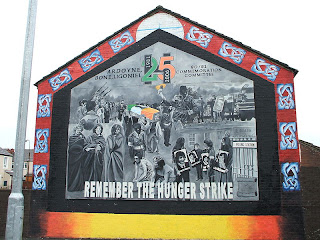A couple of weeks ago I spoke about women's role in ritual. At the time, I did so is a cursory way, and, as it is Canadian Thanksgiving, I'd like to unpack this idea a bit more. Holidays can be emotionally loaded and are wrought with ambiguous feelings. We come together in the act of thankfulness. However, these times are often filled with conflict about our relationships, reminding us of past (or current) disappointments and loss. Margaret Visser wrote in
The Rituals of Dinner, "Nothing so unites us as gathering with one mind to murder someone we hate, unless it is to come together to share a meal". I imagine it was just such a traditional celebration that she was referring to!
Our daily lives are rushed now and it is more common for families to miss sitting together for a meal. Rarely do we take the time to cook - choosing rather to eat fast food or produce that is mass produced, or food that is partly prepared that we buy at the shops. We then race home to heat it up and present it as a meal. But the ritual of cooking is an art. It demands time, thought and consideration for those who are going to eat with us. As I prepare the dinner for Thanksgiving, I think immediately of this ritual as an act performed by women contributing to peace building and community healing. The woman cooking a meal to share with her community is embedded in history and a way in which women nurtured their families and their communities. Tradition is really a reflection, or a reminder, of that part of ourselves, or our community, that we admire. In fact, whenever groups of people come together, one of the essential elements to build community is the act of preparing and sharing of food.
I peel the potatoes, carefully calculating that there will be enough leftovers to give to a friend and her children who can't join us this evening. I prepare and stuff the turkey lovingly, wrapping it in cheesecloth so the breast won't burn and it will stay moist through its long slow cooking. I methodically set the dinner table in a way I've done for years - and as my mother and grandmother did - ironing the table cloth, and placing the cutlery, candles, glasses and gourds carefully in its place - the plates will be added later once the food is served. I consider the aesthetics, hoping that every sense is pleasantly stimulated. Slowly the flat is enveloped with the smells of cooking turkey, baked squash and burning candles. I've no fire to set this year but I will make up for this by lighting the room with about 30 candles to give off a warmth that is evocative of a fire. My friend is cooking dessert - made from scratch - as a contribution to the evening (also he knows I'm not a baker). Everything I do is done with a remembrance of past celebrations - some more peaceful than others.
I'm dining with my friends and my father who will turn 89 in a couple of days and I am thankful. All that I do today is a ritual to express my gratitude for having family, food and a warm place to live. So many are without all of that and those who are surrounded by family may actually spend the day trying to find ways to mediate their difficult relationships. Those without family will hopefully be surrounded by friends or, as offered by the
Toronto Daily Food Bank, take part in the community ritual of sharing a meal with a new people. I see this ritual art of cooking as being one role in which women build community!
Canadian Thanksgiving
For Genevieve Macaulay and Jeffrey
Smith
Earth
leans away from autumn sun
and
winter chills have just begun
to
colour leaves before they die.
How
their brief flame delights the eye
while
the green life sinks under earth
to
sleep secure till spring’s rebirth!
Virgo
at last is gone to bed
with
Libra wheeling overhead
and
Scorpio waiting in the wings
whose
tail is barbed with winter’s stings.
The
Hummingbirds were swift to go,
fuelled
from flowers, to Mexico,
the
Redtail hawks on stronger wings
fly
south in search of better things.
Rising
from Lake Ontario
fogs
presage months of ice and snow.
Weighing
these losses, there’s good reason
to
mourn a melancholy season.
Yet
this is not a time of dearth,
we
have the kindly fruits of earth.
the
grain and apples gathered in,
the
hay is saved, the ripe pumpkin
is
almost plump enough to bake
in
pies, or jack-‘o- lanterns make.
And
whether skies are bright or murky
we
sacrifice the fatted turkey.
This
rite began in Pilgrim days
with
pious mien and psalms of praise.
The
Yanks gave thanks on rigid knees
then
fell on the Aborigines
in
fierce and godly genocide,
Jehovah
scowling at their side.
But
we, of course, are not like that,
grateful
to be just where we’re at.
and
with a kinder, gentler creed,
give
thanks for getting all we need.
And
thank our stars for friends right here,
for
laughter, love and country cheer,
good
food, good wine and crystal skies,
and
the brief glow as summer dies.


